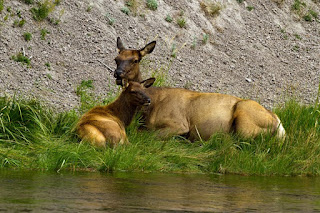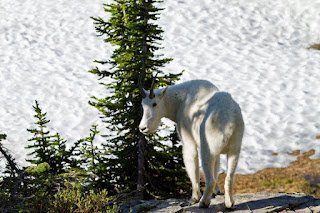Elk (Cervus elaphus) are the most abundant large mammal found in Yellowstone. More than 30,000 elk from 7-8 different herds summer in Yellowstone and approximately 15,000 to 22,000 winter in the park.
While driving around the park on Saturday I thought I might find Elk along the Madison River on the west entrance to the park. Sometime in September and early October is the Elk breeding season or "rut season". I hoped to maybe find a large bull beginning to gather his harem but only found a small group of cows with their teenagers from this years birth. Here is a mother still keeping a watch on her growing youngster.
These two youngsters were playing in the river's edge.
This youngster was keeping a watchful eye on the photographers along the shore of the river.
This will be my last blog post from Yellowstone. I'll likely post a few more topics in the coming weeks from my summer here and then will switch back to Florida wildlife, primarily birds which will begin their southward migration soon.
To my friends from Yellowstone, a big Thank You for making this a special summer and I hope to see you again.
To my family, Thank You for allowing me the time to live my dreams and for taking care of things while I'm away.
Thanks to everyone for following my Yellowstone adventure. David























